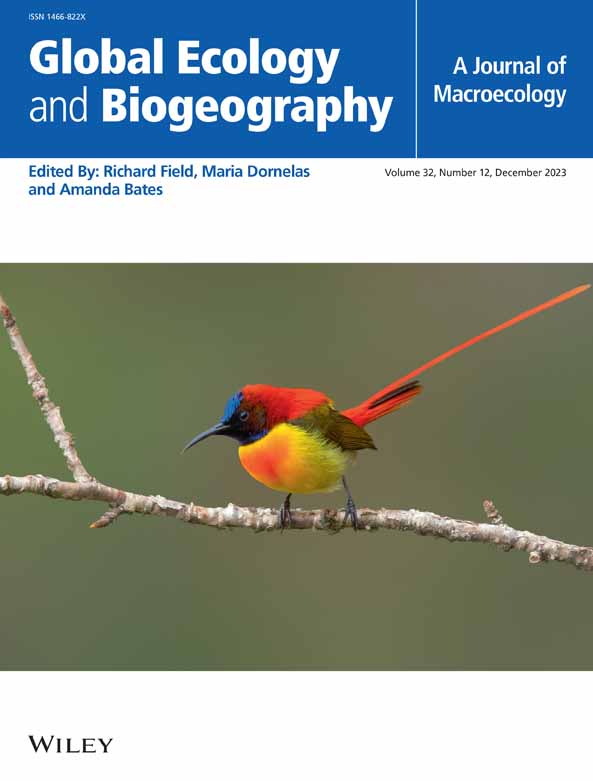Phylogenetic Evidence Supports the Effect of Traits on Late-Quaternary Megafauna Extinction in the Context of Human Activity
Abstract
Aim
The late-Quaternary extinctions, which affected primarily large mammals, are strongly connected to the migration of modern humans out of sub-Saharan Africa and tropical Asia (the Palaeotropics), and human hunting remains one of the greatest threats to large mammals globally. Species traits are known to affect vulnerability to human impacts in other (non-megafauna) taxa and so here we conduct an exploratory analysis to test how traits affect the risk of megafaunal species being driven to extinction by humans—both prehistorically in species that are already extinct and currently in species threatened by hunting.
Location
Global.
Time
Late Pleistocene and Holocene, 129–0 kya.
Major Taxa Studied
Mammals with a body mass ≥ 9 kg.
Methods
We used phylogenetic logistic regression to analyse the effects of 17 functional, biogeographical, and phylogenetic traits on the incidence of extinction in 544 extinct and extant (196 and 348, respectively) megafauna species.
Results
Our primary finding was that, just as Palaeotropical species experienced a lower incidence of extinction compared to megafauna elsewhere, species on other continents that were more closely related to Palaeotropical species also had lower extinction compared to those more distantly related. We also found support for higher extinction in island endemics, larger-bodied species and plantigrade (flat-footed) species.
Main Conclusions
Larger, more insular and plantigrade species were more vulnerable to human impacts due to preferential hunting and/or vulnerability to specific hunting techniques. Older, hominin-driven extinctions in the Palaeotropics (before the Late Pleistocene) may have filtered out species with vulnerable trait combinations, rendering Palaeotropical species and their non-Palaeotropical relatives more resistant to later human impacts. Our finding that several of the same traits influence extinction threat in places where hunting of megafauna is still ubiquitous has implications for the contextualisation of prehistoric megafauna extinctions and for modern conservation and restoration.


 求助内容:
求助内容: 应助结果提醒方式:
应助结果提醒方式:


